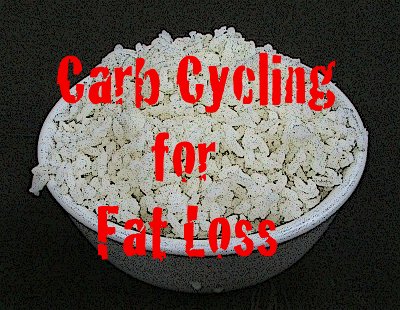Cycling Carbohydrates: An Introduction
One of the dietary strategies you may have heard about about from bodybuilders, fitness competitors, or those just wanting to lose weight is called carb cycling. This is a term for scheduling days of high carbohydrate consumption followed by days of successively lower carbohydrate consumption. This approach seems to be a very effective way to maximize fat loss while maintaining training intensity. I’ll explain the basics of why this works.
Why Lowering Carbs Works
Restricting carbohydrates (aka low carb or ketogenic diets) can be very effective for helping people lose weight. Going several days with low carbohydrate intake (lets say 50 grams or less) eventually causes glycogen levels (glucose in the liver and muscles) to get so low that the body has to switch to another fuel source. This metabolic shift is called ketosis, meaning the body is primarily using fat as its source of calories/fuel. I discovered ketogenic/low carb dieting years ago and have used it with good success.
Some have adopted adopted a low carbohydrate lifestyle and credit it with saving their health (if not their very lives). These individuals follow this diet year-around in order to stay at a healthy weight. More power to you if you are able to do this.
The Drawbacks of Restricting Carbohydrates
But eating this way all the time is not very practical for athletes or those who engage in intense exercise like weight training. Those of us who have trained while in ketosis can testify how sluggish the workouts are. Eating carbohydrates refills the before-mentioned glycogen so muscles can perform optimally.
Thus the dilemma: low carb eating is great for fat loss, but not so great for exercise performance.
Carb Cycling: Lose Fat, Maintain Training Intensely
One solution to this is carb cycling, which may be able to give you the best of both worlds. It really isn’t that complicated: you simply lower your carbohydrate over the course of a few days. The first day, for example, you can eat 200 grams of carbs, followed by 125 on the second and only 50 on the third. You could then repeat the cycle or just reverse it over the next two days (125 grams of carbs on day 4 and 200 again on day 5).
You may want to do your most intensive training on high carbohydrate days and try to consume most of your carbs after you work out. This will encourage the glucose to go to your muscles and liver instead of being stored as body fat.
Most of the plans I’ve seen also incorporate a “cheat day” where you just eat what you want. This shouldn’t hurt your fat loss in the long-term as long as you are consistent the rest of the time.
Just keep this in mind: all successful diets are based on a negative calorie balance–using more calories than you are consuming. Carb cycling is not a “secret formula” to get around this–it is simply one dietary strategy that you may find useful.

